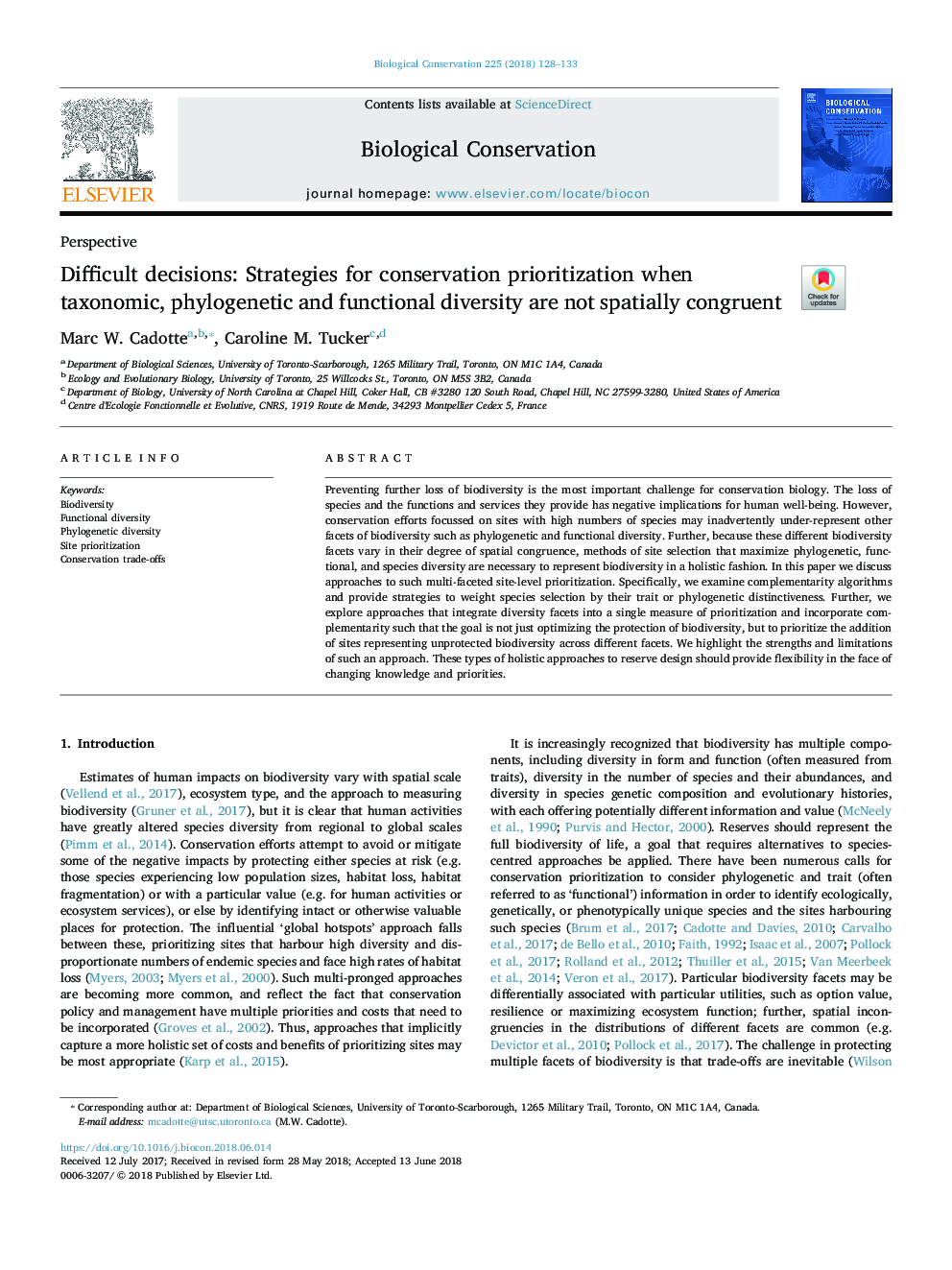| Article ID | Journal | Published Year | Pages | File Type |
|---|---|---|---|---|
| 8847125 | Biological Conservation | 2018 | 6 Pages |
Abstract
Preventing further loss of biodiversity is the most important challenge for conservation biology. The loss of species and the functions and services they provide has negative implications for human well-being. However, conservation efforts focussed on sites with high numbers of species may inadvertently under-represent other facets of biodiversity such as phylogenetic and functional diversity. Further, because these different biodiversity facets vary in their degree of spatial congruence, methods of site selection that maximize phylogenetic, functional, and species diversity are necessary to represent biodiversity in a holistic fashion. In this paper we discuss approaches to such multi-faceted site-level prioritization. Specifically, we examine complementarity algorithms and provide strategies to weight species selection by their trait or phylogenetic distinctiveness. Further, we explore approaches that integrate diversity facets into a single measure of prioritization and incorporate complementarity such that the goal is not just optimizing the protection of biodiversity, but to prioritize the addition of sites representing unprotected biodiversity across different facets. We highlight the strengths and limitations of such an approach. These types of holistic approaches to reserve design should provide flexibility in the face of changing knowledge and priorities.
Related Topics
Life Sciences
Agricultural and Biological Sciences
Ecology, Evolution, Behavior and Systematics
Authors
Marc W. Cadotte, Caroline M. Tucker,
